



  |   |
| 1 | Plug the machine’s power cord into the AC power outlet. Turn on the machine’s power switch. | ||||||||||
| 2 | Press Menu, 7, 2, 7. Using
| ||||||||||
| 3 | Turn on your computer. Close any applications running before configuration. | ||||||||||
| 4 | Put the supplied CD-ROM into your CD-ROM drive. The opening screen will appear automatically. If the model name screen appears, choose your machine. If the language screen appears, choose your language. | ||||||||||
| 5 | The CD-ROM main menu will appear. Click Initial Installation. 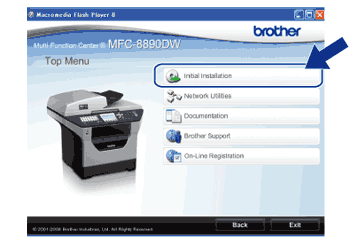 | ||||||||||
| 6 | Click Wireless LAN Setup Wizard. 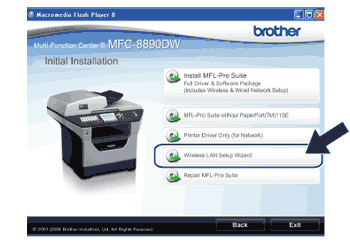 | ||||||||||
| 7 | Choose Step by Step install (Recommended) and then click Next. 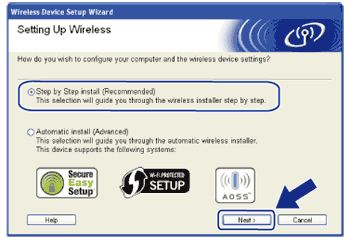 | ||||||||||
| 8 | Choose Without cable (Advanced) and then click Next. 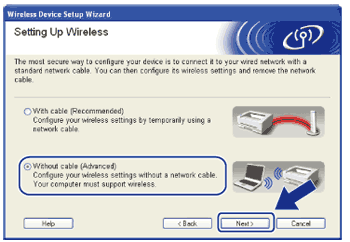 | ||||||||||
| 9 | Read the Important Notice. Check the box after you confirm the wireless setting is enabled, and then click Next. 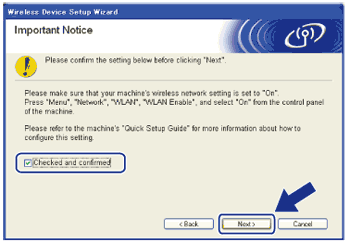 | ||||||||||
| 10 | You need to temporarily change your computer’s wireless settings. Follow the on-screen instructions. Make sure you take notes on all the settings such as SSID, channel, authentication and encryption of your computer. You will need them to return your computer back to its original wireless settings, and then click Next. 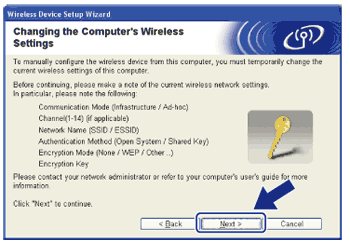 If you want to configure your machine for the wireless network you have been using, write down your wireless network settings before configuration. Check and record the current wireless network settings.
| ||||||||||
| 11 | To communicate with the un-configured wireless machine, temporarily change the wireless settings on your computer to match the machine’s default settings shown on this screen. Check the box after you confirm these settings, and then click Next. 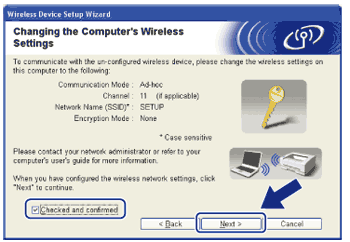 | ||||||||||
| 12 | Choose the machine you wish to configure, and click Next. If the list is blank, check if the machine is powered on, and then click Refresh. 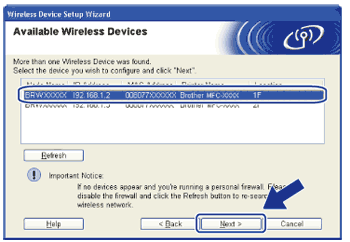
| ||||||||||
| 13 | The wizard will search for wireless networks available from your machine. Choose the Ad-hoc network you wish to associate the machine with, and then click Next. 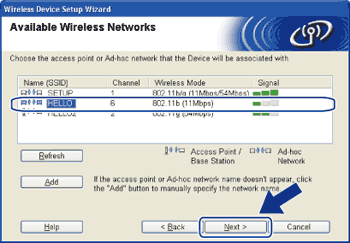
| ||||||||||
| 14 | If your network is not configured for Authentication and Encryption, the following screen will appear. To continue configuration, click OK and go to step 16. 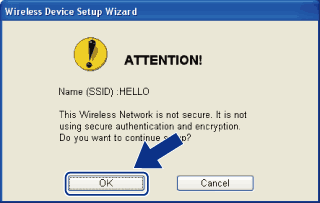 | ||||||||||
| 15 | If your network is configured for Authentication and Encryption, the following screen will appear. When configuring your Brother wireless machine, you must configure your machine to match the Authentication and Encryption settings you wrote down on page for your existing wireless network. Choose the Authentication Method and Encryption Mode from the pull-down list in each setting box. Then enter the Network Key and Confirm Network Key, and then click Next. 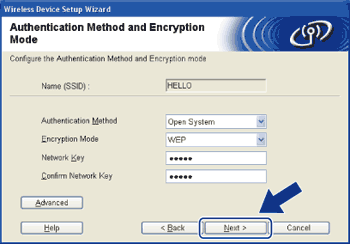
| ||||||||||
| 16 | Click Next. The settings will be sent to your machine. The settings will remain unchanged if you click Cancel. The Network Configuration page will be printed. 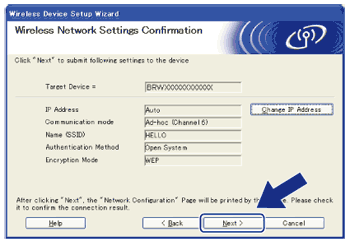 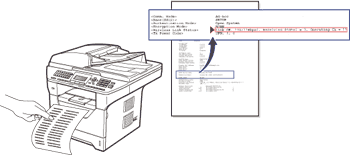 | ||||||||||
| 17 | Check the printed Network Configuration page. Choose the status as it is shown in the Wireless Link Status on the Network Configuration page. Click Next. If your status is "Link OK.", go to step 19. If your status is "Failed To Associate", go to step 18. 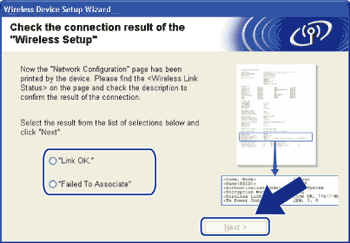 | ||||||||||
| 18 | Click Finish. Wireless setup was unable to associate with a wireless network. This is probably due to incorrect security settings. Reset the print server back to its factory default settings. (See Restoring the network settings to factory default) Confirm the security settings of your wireless network and try starting from step 6 again. 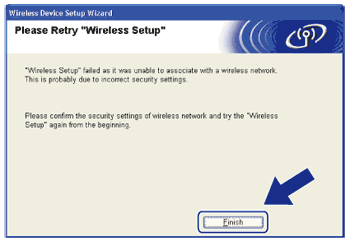 | ||||||||||
| 19 | To communicate with the configured wireless device, you must configure your computer to use the same wireless settings. Manually change the wireless settings on your computer to match the machine’s wireless settings shown on this screen. Check the box after you confirm these settings, and then click Next. (The settings shown on this screen are for example only. Your settings will not be the same.) 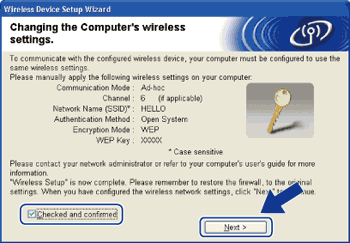 | ||||||||||
| 20 | Check the box after you confirm that you have completed the wireless settings, and then click Finish. 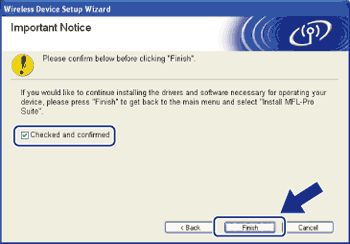 |
  |   |